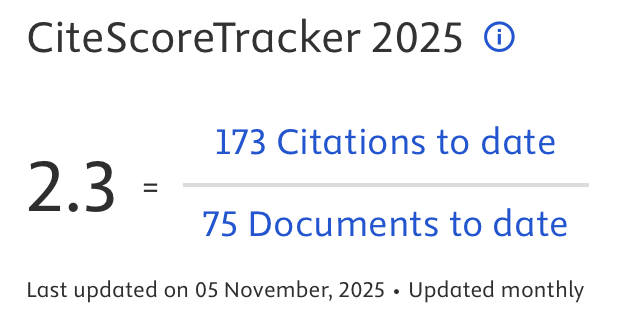PenetaPan Hadis sebagai HujjaH dalam menjawab isu-isu KontemPorer (studi Pada bahtsul masail muktamar nu Ke-33 tahun 2015)
DOI:
https://doi.org/10.14421/qh.2017.1801-03Keywords:
Hadis, Contamporary Issues, Bahtsul MasailAbstract
Hadis is one of reference to solve problems that arise in contemporary societyissues. Likewise conducted by Nahdhatul Ulama (NU) on Bahtsul Masail
Muktamar NU 33th 2015. Th interesting thing is how does NU positioning
hadis as a proof (hujjah) to deciding religion contamporary issues in the
Bahtsul Masail. So, this paper aims to how determination Hadith as one of
proofin Bahtsul Masail on Muktamar NU 33th 2015 and what methods
is used by NU to determine that hadith as a proof. Ths reseach using
archaeological approach to analyse the problems what carried by Foucalt
on power and knowledge relation theory. Base on this theory, truth must be
conceived as a system ofprocedures to regulate the production, regulation,
distribution, circulation, and operation statements. As the result, author
found that on Bahtsul Masail Muktamar NU 33th 2015 there are 13
themes that include hadis as a proof either either directly through the book
ofHadith or Fiqh book, book oftafsir, and others.
 Abstract viewed: 2746 times
|
Abstract viewed: 2746 times
|
 PDF downloaded = 1764 times
PDF downloaded = 1764 times
References
Abdullah, Amin Studi Agama: Normativitas Atau Historisitas?, Yogyakarta: Pustaka Pelajar, 1996.
Bruinnessen, Martin Van, NU Tradisi Relasi-Relasi Kuasa Pencarian
Makna Baru, Yogyakarta: Lkis, 1994.
Harono, Duwi, “Hadis Dalam Fatwa Dan Permasalahan Sosial
Kontemporer (Analisa Pemahaman Hadis MUI Dalam Keputusan
Ijtima’ Ulama Komisi Fatwa Seindonesia III Di Padang Panjang
Tahun 2009)”, Tesis UIN Sunan Kalijaga Yogyakarta, 2010.
Hasil-Hasil Muktamar Ke-33 Nahdhatul Ulama, Jakarta: Lembaga Ta’lif Wan Nasyr PBNU, 2016.
Imam, AZ dan Nasikh, “Liputan dari Halaqah Denanyar”, Santri, no. 3, tahun 1990.
Ismail, M. Syuhudi, Hadis Nabi Menurut Pembela, Pemalsu dan
Pengingkarnya. Jakarta: Gema Insani, 1995.
Khamdan, Studi Hadis Teori dan Metodologi (Kritik Terhadap Hadis-hadis Pendidikan), Yogyakarta: Idea Press, 2012.
Mahfudz, Sahal, Nuansa Fiqh Sosial, Yogyakarta: Lkis, 2012.
Nata, Abudin, Metodologi Studi Islam, Jakarta: Raja Grafido Persada, 2011.
Qardhawi, Yusuf Al-. Kaifa Nata’amal Ma’a Al-Sunnah Al-Nabawiyah,
Terj. Muhammad Al-Baqir. Bandung: Karisma, 1993.
Schacht, Joseph, Th Origin Of Muhammadan Jurisprudence, Terj. Joko Supomo, Yogyakarta: Insan Madani, 2010.
Syatibi, Abi Ishaq Al-, Al-Muwafaqat Fi Ushuli Syari’ah, Mesir: AlMaktabah Al-Tijariyah, t.t.
Umar, Nasharuddin, Deradikalisasi Pemahaman Al-Quran Dan Hadis,
Cet.1, Jakarta: Rahmat Semesta Center, 2014.
Wahid, Marzuki, “Cara Membaca Tradisi Bahtsul Masail NU: Tatapan
Reflktif ”, dalam Imdadun Rahmad (ed), Kritik Nalar Fiqh NU,
Jakarta: Lakpesdam, 2002
Yahya, Imam, “Akar Sejarah Bahtsul Masail: Penjelasan Singkat”,
dalam Imdadun Rahmad (ed), Kritik Nalar Fiqh NU, Jakarta:
Lakpesdam, 2002
Zaro, Ahmad, Tradisi Intelektual NU, Yogyakarta: Lkis, 2004.
Zuhdi, Muhammad Harfi, “Tipologi Pemikiran Hukum Islam:
Pergulatan Pemikiran Dari Tradisionalis Hingga Liberal”,
Ulumuna: Jurnal Studi Keislaman, No.1, Juni 2012.
Zuhri, Muhammad, Telaah Matan Hadis Sebuah Tawaran Metodologis, Yogyakarta: Lesfi 2003.
Downloads
Published
How to Cite
Issue
Section
License
Publishing your paper with Jurnal Studi Ilmu-ilmu al-Qur'an dan Hadis means that the author or authors retain the copyright in the paper. Jurnal Studi Ilmu-ilmu al-Qur'an dan Hadis uses license CC-BY-NC-ND or an equivalent license as the optimal license for the publication, distribution, use, and reuse of scholarly works. This license permits anyone to copy and redistribute the material in any medium or format and must give appropriate credit, provide a link to the license, and indicate if changes were made. If you remix, translate, transform or build upon the material you may use it for private use only and not for distribution. Jurnal Studi Ilmu-ilmu al-Qur'an dan Hadis granted an exclusive non-commercial reuse license by the author(s), but the author(s) are able to put the paper onto a website, distribute it to colleagues, give it to students, use it in your thesis, etc, so long as the use is not directed at a commercial advantage or toward private monetary gain. The author(s) can reuse the figures and tables and other information contained in their paper published by Jurnal Studi Ilmu-ilmu al-Qur'an dan Hadis in future papers or work without having to ask anyone for permission, provided that the figures, tables, or other information that is included in the new paper or work properly references the published paper as the source of the figures, tables or other information, and the new paper or work is not direct at a private monetary gain or commercial advantage.
Jurnal Studi Ilmu-ilmu al-Qur'an dan Hadis journal Open Acces articles are distrubuted under the Creative Commons Attribution-NonCommercial-NoDerivatives 4.0 International (CC BY-NC-ND 4.0). Article can be read, copy and redistribute the material ini any medium or format under the following conditions:
Attribution — You must give appropriate credit, provide a link to the license, and indicate if changes were made. You may do so in any reasonable manner, but not in any way that suggests the licensor endorses you or your use.
NonCommercial — You may not use the material for commercial purposes.
NoDerivatives — If you remix, transform, or build upon the material, you may not distribute the modified material.









